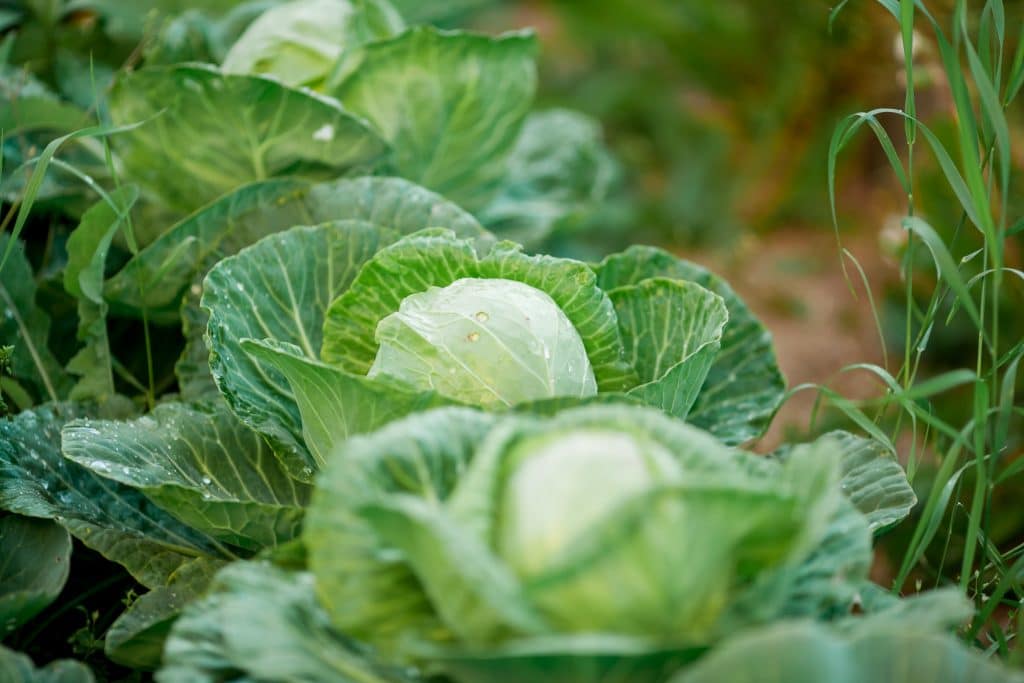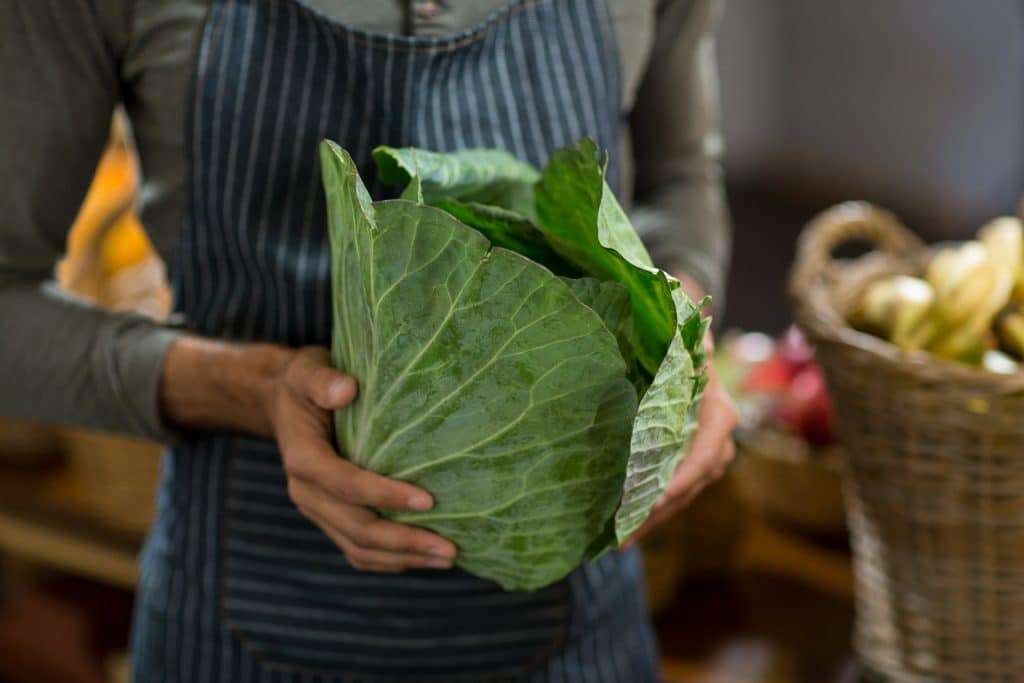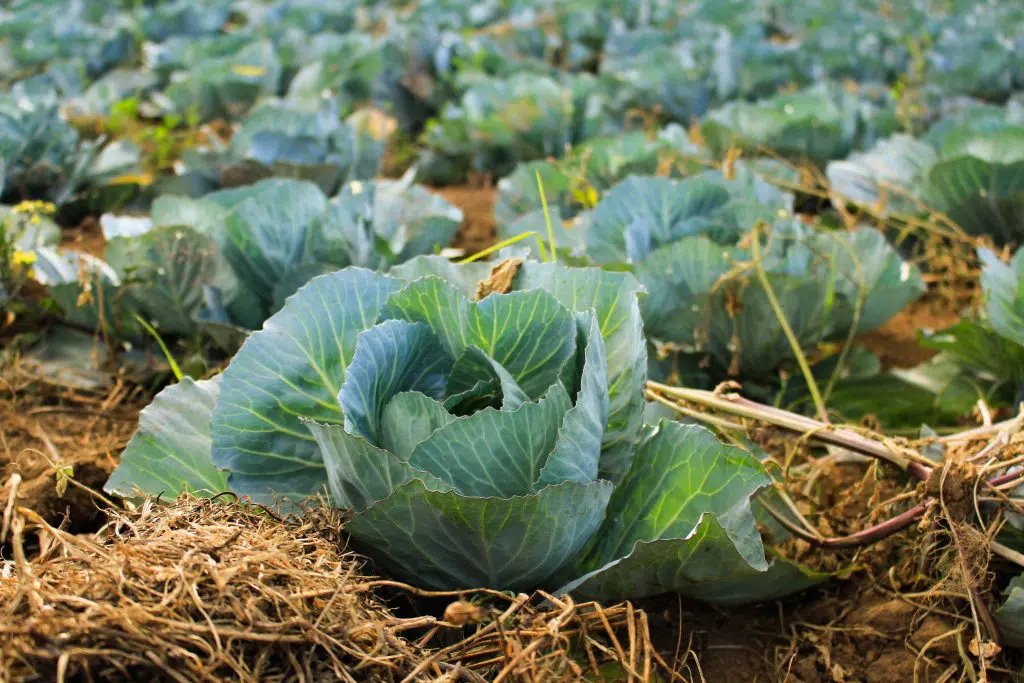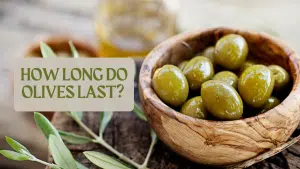How Long Does Cabbage Last?
Important Note: When you buy through our links, we may earn a commission. As an Amazon Associate we earn from qualifying purchases. Content, pricing, offers and availability are subject to change at any time - more info.
Used in various dishes, from stir-fries to coleslaw, cabbage is a wonderfully versatile vegetable. It has a longer shelf life than other kinds of vegetables; however, its lifespan is limited, even if refrigerated, as with other fresh fruits and vegetables. How long can you expect your cabbage to last, and what is the best storage practice?
Tightly wrapped in plastic, a head of cabbage will last for about two weeks in the refrigerator. After cut, one should use the cabbage within 2-3 days. Refrigerate and cover cabbage that has been cooked within two hours; once refrigerated, consume after 2-3 days.
Cabbage is a popular vegetable as it contains minerals and vitamins, comes in green and purple varieties, and is long-lasting. It is a veggie that can be used in several dishes. They are a favored choice due to their longer shelf-life and low FODMAP. There are, however, factors to consider when answering the question of how long a cabbage lasts.

- How To Tell If A Cabbage Is Bad?
- How To Store A Cabbage For Optimum Shelf- Life?
- How Long Does Cabbage Last In And Out Of The Refrigerator?
- Signs That A Cabbage Has Gone Bad
- When My Cabbage Is Brown, Is It Safe To Eat?
- When My Cabbage Is Yellow, Is It Safe To Eat?
- When My Cabbage Has Black Spots, Is It Safe To Eat?
- Can You Freeze A Cabbage So It Will Last Longer?
- How Long Does Cooked Cabbage Last After Being Frozen?
- So, How Long Does Cabbage Last?
How To Tell If A Cabbage Is Bad?
Cabbage has a lower water content than other types of green vegetables, such as spinach or kale. Therefore, the shelf life of this vegetable is substantially longer if it is being stored appropriately.
The main factor in deciding whether a cabbage is bad or still good to use is whether the cabbage has been cooked or is still raw. In making sure that your cabbage is still good to eat, you need to check for signs of decay. If you have a suspicion that your cabbage has gone off, you should immediately discard it in your compost bin or trash can.
Here are the five ways you can establish whether your cabbage is still good to use or is better off being thrown away:
Smell Your Cabbage
Use your nose! The easiest way to check out whether a cabbage is no longer good is to smell it. An old and spoiled cabbage will smell strongly of decay or ammonia, and you will be able to tell immediately if it is no longer edible.
Look At Your Cabbage
As with other vegetables such as cucumber, one of the first signs of a decaying vegetable is its discoloration and slushy texture; looking at the cabbage helps establish whether it may be no longer suitable to consume.
Are the outer leaves shriveled up, and the first few layers wilted? Also, something which may happen is that the leaves of a spoiled cabbage will begin to shrink and discolor. When you cut this cabbage, you will see that its edges turn greyish black.
Feel Your Cabbage
Check your cabbage thoroughly to make sure it is fresh enough to use. If it is slimy or mushy in texture, it signals that it has started to rot. It will also feel moisturized and wet if past its expiry.
Look For Mold Or Fungus
Cabbage is a food type that turns watery and moldy over time. If it is left in the fridge for over four weeks, you could most probably expect to find mold or fungus growing on your cabbage.
Fruit and vegetables, which are firmer in composition, can do better with some mold, as they are lower in moisture. Examples of these vegetables are; carrots, cabbage, and peppers. Molds have difficulty growing roots in dense foods, so if you cut off at least 1 inch around the mold spot, you should be fine to eat your firm fruits and vegetables.
Taste The Cabbage
If the top portion is all that is withered, but the cabbage otherwise appears and smells satisfactory, you can give it a taste. As you would with lettuce, peel back the top few layers. See if there is an odor as you do this. If you cannot smell anything, you can wash the cabbage and taste the raw leaves. If it tastes healthy, mix it into coleslaw to preserve, or you could also cook it in a stir-fry.

How To Store A Cabbage For Optimum Shelf- Life?
How you store your cabbage is also a factor in how long a cabbage will keep.
There are various ways of preserving cabbages. When purchasing a cabbage from either a store or a greengrocer, you must follow its guideline stating the date you are supposed to have eaten it. If there is not a guideline indicated, it is up to you to approximate the date it was purchased and know when it goes bad.
In many cold areas around the world, cabbage is well-loved precisely because it stores so well. In the middle of winter, when snow may cover the garden, it is great to have the cabbage in our fridges to provide the green in our diet.
Correct storage of vegetables slows the respiration process in a cabbage. The quicker the cabbage respires, the faster it breaks down and begins to spoil.
An ideal place in which to store cabbage is in the vegetable drawer of your fridge. It doesn’t require a sealed bag or an airtight container. Also, it is not needed to wash the cabbage before placing it in the refrigerator. The outer leaves may be wilted, but they protect the inner leaves and retain freshness in the center of the cabbage.
If you have cabbage in your kitchen all year round, you can prolong its shelf life by keeping it in the freezer. However, it is advised to blanch the cabbage first to retain its nutrients as much as possible during freezing.

Tips For Storing Your Cabbage
- After purchasing or harvesting, make sure to leave all the leaves on the head. The outer layers of a head of cabbage protect the inner and more tender leaves, especially helping keep the moisture.
- Only wash your cabbage when you are ready to use it, not beforehand.
- Cabbage stores well in a crisper drawer of the refrigerator. You can put the cabbage in a plastic bag to help retain moisture, but it isn’t essential.
- Be careful with your cabbage and handle it gently. If you are only using a section of it, make sure to wrap the remainder tightly and put it into the refrigerator.
- Try to lessen the amount of bruising of your cabbages. Any cell damage makes the cabbage spoil more quickly and degrades the Vitamin C content.
If cabbage is stored correctly, it can last from 3 weeks to up to 2 months in your refrigerator.
How Long Does Cabbage Last In And Out Of The Refrigerator?
A cabbage’s natural shelf-life will be affected by the temperature at which it is stored. Below is the average time a cabbage will last in the raw and cooked form at these three temperatures.
Raw Cabbage
| Type of Cabbage | Shelf Life In Fridge 40° F (4° C) | Shelf Life At Room Temperature 20–22 °C (68–72 °F) | Shelf Life In Freezer 0° F (-18° C) |
| Green Cabbage | Three weeks – 2 months | Three days – 2 weeks | Eight weeks |
| Red Cabbage | Three weeks – 2 months | Three days – 2 weeks | Eight weeks |
Cooked Cabbage
| Type of Cabbage | Shelf Life In Fridge 40° F (4° C) | Shelf Life At Room Temperature 20–22 °C (68–72 °F) | Shelf Life In Freezer 0° F (-18° C) |
| Green Cabbage | 3 – 5 days | 2 hours | 10 – 12 months |
| Red Cabbage | 3 – 5 days | 2 hours | 10 – 12 months |
Usually, most vegetables can be safe at room temperature for just about three days, including cabbage. The time will be even less in more hot and humid areas; your cabbage only lasts a day or two.
If stored properly in a freezer, your cabbage can last from 2 months to 18 months.
A whole cabbage does last longer than a cabbage that is already cut open. A cabbage that has been cut can only be safe on your kitchen counter for a couple of hours.
Signs That A Cabbage Has Gone Bad
When your cabbage is stored improperly, it will result in an old and spoiled cabbage. The most common presentation of rotten cabbage is when the leaves are wilted and change color from a bright green to yellow, brown, or grey.
In severe cases, once the cabbage is decayed, it doesn’t smell fresh or firm to touch anymore but is replaced with a soft texture and develops an off odor. At this time, you need to discard the whole cabbage immediately as keeping or eating it can lead to food poisoning.
The cut edge of cabbage can turn to dark grey soon if you don’t store it well more quickly after slicing it open. If this does occur, you may need to cut the bad part off and keep the rest to consume.
When My Cabbage Is Brown, Is It Safe To Eat?
No, probably not. While different varieties of cabbage vary in color, none of them are brown. This would be a sure sign that it’s past its expiration and should just be discarded.
When My Cabbage Is Yellow, Is It Safe To Eat?
If leaves do turn yellow after a long period of storage or incorrect storage in the refrigerator- they are likely to be safe to eat as long as they don’t show signs of rotting or smell funky. Peel back the few discolored leaves, discard those, and continue to use the under part of the cabbage.
When My Cabbage Has Black Spots, Is It Safe To Eat?
There are two instances where there may be back spots developing on your cabbage. Black dots can occur due to mold or during growth. It is advisable to remove the outside leaves instead, discard them, and then clean the rest of the cabbage before use. Spots found on the inside of the leaves means you could return the cabbage to the store for a refund.
However, there is also an instance when there may be tiny black spots on your cabbage leaves. These are known as either ‘Black Spec’ or ‘Pepper Spots.’ It is not known as to what causes them, but they are harmless and do not affect the taste of the cabbage. This short video link discusses black spots:
Can You Freeze A Cabbage So It Will Last Longer?
Yes, although refrigerating is the easiest and best way to store cabbage, you can also freeze it in the freezer. It is best to blanch the cabbage first.
Blanching is the process of putting vegetables into boiling water or steaming them for a brief period and is recommended for any time you need to freeze vegetables.
Blanching assists in cleaning the surface of the vegetable of dirt, and it helps preserve the vitamins in the veggie. Blanching extends the life of the tightly-packed leaves of cabbage for up to 18 months.
Notes for freezing your cabbage:
- You can extend the shelf-life of your cabbage by freezing it after cooking it.
- Freeze it in a covered and airtight container, or you can use heavy-duty freezer bags. You can also make use of aluminum foil or freezer wrap to wrap it tightly.
- Correctly stored, cabbage will maintain good quality for 10 to 12 months but will remain safe beyond that time.
- Cooked cabbage kept constantly frozen at 0°F will stay safe indefinitely.
How Long Does Cooked Cabbage Last After Being Frozen?
Cooked cabbage, which has been blanched, then frozen, can be thawed and then refrigerated, to be used within 2-3 days. However, cabbage that has been thawed in either the microwave or in cold water needs to be eaten immediately.
The most recommended way to thaw any frozen vegetable, including cabbage, is naturally in the refrigerator. This can take up to 2 days.

So, How Long Does Cabbage Last?
There are many delicious meals which are complimented with cabbage, either green or purple. Due to its low moisture makeup, it is a vegetable that can last for a more extended period than other fruits and vegetables. The shelf life of cabbage depends on the temperature at which it is stored and whether it has been cooked or is raw.
Cabbage will last a few days in a cool, dark place outside the refrigerator, and if wrapped in plastic and not cut, it can last for two weeks or longer in the fridge. Cooked cabbage needs to be refrigerated after 2 hours and consumed between 2-5 days after cooking. If a cabbage shows discoloration or mold, you can cut out those bits and still safely eat it.























